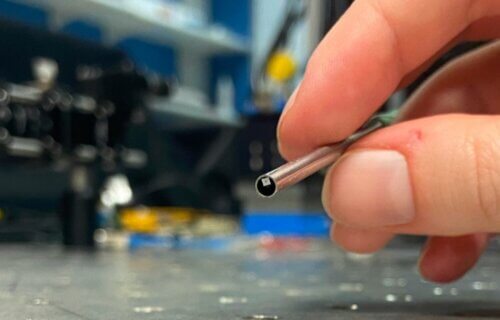BELLINGHAM, Wash. — It’s no secret how crucial early detection is in the battle against cancer. However, that’s much easier said than done for many forms of the disease. That challenge is the driving force behind an innovative study by researchers from the University of Nottingham, who have developed a low-cost imaging device that may revolutionize gastrointestinal cancer (GC) screenings and make them accessible to everyone.
Gastrointestinal cancers are among the most lethal diseases, but early diagnosis can significantly enhance survival rates. However, the current endoscopic screening methods face significant hurdles, including high costs and bulky equipment, which limit their widespread use. This scenario sets the stage for a much-needed breakthrough in medical technology.
“Existing systems are not fit for routine endoscopic deployment in the gastrointestinal tract because they either use digital micromirror device-based projectors, which are costly and cannot be sufficiently miniaturized, or use fiber bundles which produce low-quality patterns at a limited set of wavelengths and only record low-resolution images, or use rigid endoscopes that are not flexible enough,” explains researcher Jane Crowley from the University of Nottingham in a media release.
Researchers Jane Crowley and George Gordon introduced an ingenious solution to these challenges: a miniaturized spatial frequency domain imaging (SFDI) system designed to fit within the confines of standard endoscopes. This approach is as groundbreaking as it is practical, utilizing advanced optical technology to distinguish between benign and malignant tissues with precision.
The heart of their findings lies in the development of an ultraminiature SFDI system capable of providing over 90 percent specificity and sensitivity in detecting squamous cell carcinoma — a common cancer of the skin — which aligns with the highest clinical standards of medical devices.

By employing a custom-made optic fiber bundle as a projector, the researchers could generate detailed light patterns necessary for SFDI. This technological leap not only overcomes the limitations of size and cost but also maintains the integrity of diagnostic precision. Their experiments have shown exceptional promise in distinguishing between healthy and cancerous tissues, marking a significant advancement in screening technology.
“Our prototype shows promise as a cost-effective, quantitative imaging tool to detect variations in optical absorption and scattering as indicators of cancer. This work could form the basis of new devices suitable for cost-effective endoscopic deployment for screening of gastrointestinal cancers,” concludes Crowley.
While the study showcases the potential to revolutionize GC screening, the authors acknowledge the journey ahead, including the need for further clinical testing before use.
What does this mean for individuals and their healthcare teams? The development of this ultraminiature imaging system brings us even closer to personalized, accessible cancer screening. By identifying gastrointestinal cancers early, healthcare providers would be able to offer targeted, effective interventions, significantly improving patient outcomes and survival rates.
What does a pharmacist think?
Though we may still be a long way from your doctors being able to screen for potential tumors with their endoscopes, the results of this study demonstrate that reality may be closer than we think. The idea is practical, novel, and has much potential. Future studies that further test the sensitivity and specificity of new cameras like this will be necessary for any federal approval to happen.
This study also paves the way for more inclusive, effective cancer detection methods by pushing the boundaries of current screening technologies. As we look forward to a future where early diagnosis is within reach for all, we envision a world with significantly improved prospects for those facing the daunting challenge of cancer.
The study is published in the Journal of Biomedical Optics.
You might also be interested in:
